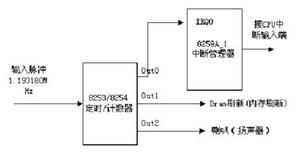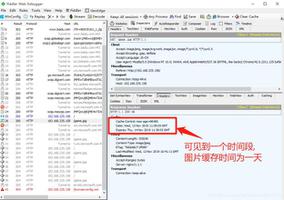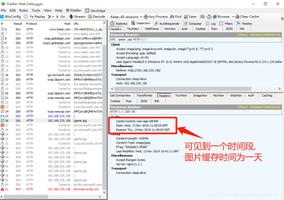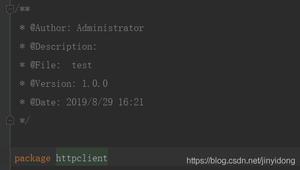Linux时间操作及其同步

完整格式支持链接:https://blog.imakiseki.cf/2022/02/27/techdev/linux-time-operations-and-sync/
本文将以 Arch Linux 为例,讨论 Linux 的时间操作和同步方法。
本文围绕 Linux 的时间将 ArchWiki 上 System time 页面的部分内容做简化,并整理其他文章作为补充,简化理论性,增强可操作性。
概述
操作系统的时间 (clock) 由三或四部分决定:
- 时间值;
- 是否为 UTC 时间;
- 时区;
- (如果有)夏令时。
而操作系统的时间一般有两种:硬件时间和系统时间。
硬件时间
硬件时间 (也即真实时间 (Real Time Clock, RTC) 或 CMOS 时钟) 一般只存储时间值,直至 2016 年后 UEFI 硬件支持对时区和夏令时的存储。
系统时间
系统时间 (也即软件时间) 可以追踪时间值、时区以及可能存在的夏令时。系统时间由 Linux 内核计算,时间值为 UTC+0 下自 1970 年 1 月 1 日午夜至今的秒数——可以在 time.is 网站查询得到。
尤其需要注意的是:操作系统完全启动后,系统时间与硬件时间是独立的。
读取
状态
Linux 的时间状态可由 timedatectl 或 timedatectl status 命令获取。输出类似于:
Local time: Sun 2022-02-27 12:52:24 UTC Universal time: Sun 2022-02-27 12:52:24 UTC
RTC time: n/a
Time zone: UTC (UTC, +0000)
System clock synchronized: yes
NTP service: active
RTC in local TZ: no
我们可以得知:
- 本地时间值和 UTC 时间值均为 Sun 2022-02-27 12:52:24 UTC;
- 硬件时间不存在;
- 时区为 UTC (UTC+0);
- 已经开启系统时间同步。
硬件时间
上方的示例中硬件时间 (RTC time) 显示为“n/a”,也就是不存在。在一部存在硬件时间的 Linux 设备上,可以执行 hwclock --show 查看硬件时间:
$ hwclock --show2022-02-27 21:14:16.129670+08:00
比 timedatectl 更进一步的是,hwclock 可以显示有关硬件时间的更详细信息:
$ hwclock --verbosehwclock from util-linux 2.34
System Time: 1645967662.035542
Trying to open: /dev/rtc0
Using the rtc interface to the clock.
Assuming hardware clock is kept in UTC time.
Waiting for clock tick...
...got clock tick
Time read from Hardware Clock: 2022/02/27 13:14:24
Hw clock time : 2022/02/27 13:14:24 = 1645967664 seconds since 1969
Time since last adjustment is 1645967664 seconds
Calculated Hardware Clock drift is 0.000000 seconds
2022-02-27 21:14:23.020178+08:00
对此输出不再作进一步介绍。
设置
硬件时间(与系统时间一致)
我们一般很少手动设置硬件时间。若要设置,可以使其与系统时间保持一致:
sudo hwclock --systohc这会新建或更新 /etc/adjtime 的内容,示例如下:
$ cat /etc/adjtime0.000000 1645969156 0.000000
1645969156
LOCAL
系统时间
sudo timedatectl set-time "yyyy-MM-dd hh:mm:ss"例如:
sudo timedatectl set-time "2014-05-26 11:13:54"时区
设置时区前,先需要知道可用的时区:
timedatectl list-timezones其中有“Asia/Shanghai”,可将时区设置为此:
sudo timedatectl set-timezone Asia/Shanghai同步
此处提到的同步指的是系统时间与其他服务器提供的时间同步。以下提供两种方式。
systemd-timesyncd 服务
配置
首先启用该服务,执行 systemctl start systemd-timesyncd。可以选择加入自启动项。
打开 /etc/systemd/timesyncd.conf 文件,其中的内容可能如下:
[Time]#NTP=
#FallbackNTP=0.arch.pool.ntp.org 1.arch.pool.ntp.org 2.arch.pool.ntp.org 3.arch.pool.ntp.org
#RootDistanceMaxSec=5
#PollIntervalMinSec=32
#PollIntervalMaxSec=2048
#SaveIntervalSec=60
删去前两行的注释记号,并作如下修改:
NTP=0.cn.pool.ntp.org 1.cn.pool.ntp.org 2.cn.pool.ntp.org 3.cn.pool.ntp.orgFallbackNTP=0.arch.pool.ntp.org 1.arch.pool.ntp.org 2.arch.pool.ntp.org 3.arch.pool.ntp.org
若要验证配置,执行 timedatectl show-timesync --all。一般输出类似于:
LinkNTPServers=SystemNTPServers=
FallbackNTPServers=0.arch.pool.ntp.org 1.arch.pool.ntp.org 2.arch.pool.ntp.org 3.arch.pool.ntp.org
ServerName=0.arch.pool.ntp.org
ServerAddress=103.47.76.177
RootDistanceMaxUSec=5s
PollIntervalMinUSec=32s
PollIntervalMaxUSec=34min 8s
PollIntervalUSec=1min 4s
NTPMessage={ Leap=0, Version=4, Mode=4, Stratum=2, Precision=-21, RootDelay=177.398ms, RootDispersion=142.196ms, Reference=C342F10A, OriginateTimestamp=Mon 2018-07-16 13:53:43 +08, ReceiveTimestamp=Mon 2018-07-16 13:53:43 +08, TransmitTimestamp=Mon 2018-07-16 13:53:43 +08, DestinationTimestamp=Mon 2018-07-16 13:53:43 +08, Ignored=no PacketCount=1, Jitter=0 }
Frequency=22520548
但若出现类似如下的输出:
LinkNTPServers=SystemNTPServers=0.cn.pool.ntp.org 1.cn.pool.ntp.org 2.cn.pool.ntp.org 3.cn.pool.ntp.org
FallbackNTPServers=0.pool.ntp.org 1.pool.ntp.org 2.arch.pool.ntp.org 3.arch.pool.ntp.org
ServerName=
ServerAddress=
RootDistanceMaxUSec=5s
PollIntervalMinUSec=32s
PollIntervalMaxUSec=34min 8s
PollIntervalUSec=0
Frequency=0
请跳过本小节,跳转至 chrony。
生效
若要使配置生效,执行 timedatectl set-ntp true。
同步过程需要持续一段时间。若要检查同步状态,执行 timedatectl status。输出类似于:
Local time: Thu 2015-07-09 18:21:33 CEST Universal time: Thu 2015-07-09 16:21:33 UTC
RTC time: Thu 2015-07-09 16:21:33
Time zone: Europe/Amsterdam (CEST, +0200)
System clock synchronized: yes
NTP service: active
RTC in local TZ: no
若要查看详细信息,执行 timedatectl timesync-status。输出类似于:
Server: 103.47.76.177 (0.arch.pool.ntp.org)Poll interval: 2min 8s (min: 32s; max 34min 8s)
Leap: normal
Version: 4
Stratum: 2
Reference: C342F10A
Precision: 1us (-21)
Root distance: 231.856ms (max: 5s)
Offset: -19.428ms
Delay: 36.717ms
Jitter: 7.343ms
Packet count: 2
Frequency: +267.747ppm
chrony
chrony 是一个漫游友好型、且专为非所有时间在线的系统设计的程序,可以用以同步系统时间。
安装
大部分软件管理器中均有该软件包。执行:
sudo pacman -S chrony这将在 /usr/bin 下放置 chrony 的两个可执行文件 chronyc 和 chronyd,分别作为客户端和服务端(保护进程)。
也可以在官网中查阅其他安装方式。
配置
配置文件一般为 /etc/chrony.conf 或 /etc/chrony/chrony.conf。
打开配置文件,做如下更改:
- 定位到
pool配置项,修改其后的服务器地址为0.cn.pool.ntp.org; - 定位到
makestep配置项,根据需求修改;- 第一个数字:进行“时间跳跃”的阈值——同步时若系统时间与服务器返回结果相差在阈值内,则程序会逐渐调整当前系统时间;反之则会直接将系统时间设为正确时间(注意:“时间跳跃”可能会对其他程序造成负面影响,不宜将此值调至过小);
- 第二个数字:可进行时间调整的范围——设置为
n表示仅前n次时间更新过程可发生这种调整。
- 定位到
logdir配置项,删去配置记号; - 定位到
rtcsync配置项,删去注释记号。
生效
启用该服务,执行 systemctl start chronyd。可以选择加入自启动项。重启,读取系统时间检查:
Local time: Sun 2022-02-27 23:16:28 CST Universal time: Sun 2022-02-27 15:16:28 UTC
RTC time: n/a
Time zone: Asia/Shanghai (CST, +0800)
System clock synchronized: yes
NTP service: active
RTC in local TZ: no
观察到“System clock synchronized”栏的输出是“yes”。
若要立刻更改系统时间,执行 chronyc makestep。
参考
- https://wiki.archlinux.org/title/System_time
- https://wiki.archlinux.org/title/Systemd-timesyncd
- https://www.tecmint.com/install-chrony-in-centos-ubuntu-linux/
Break your stereo days. Whatever they say you will never stop to believe in yourself. Brave invisible world. You know that it"s true you can find the new way.
以上是 Linux时间操作及其同步 的全部内容, 来源链接: utcz.com/z/520241.html








